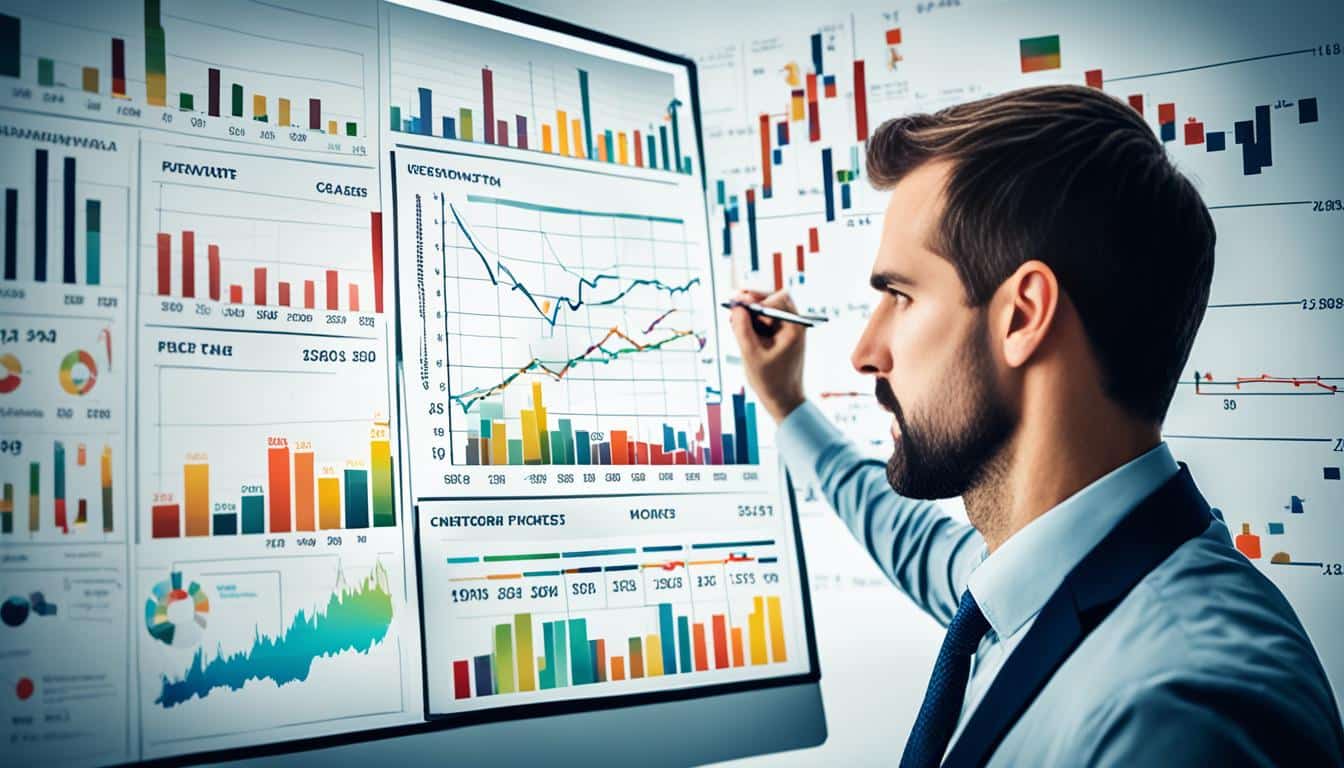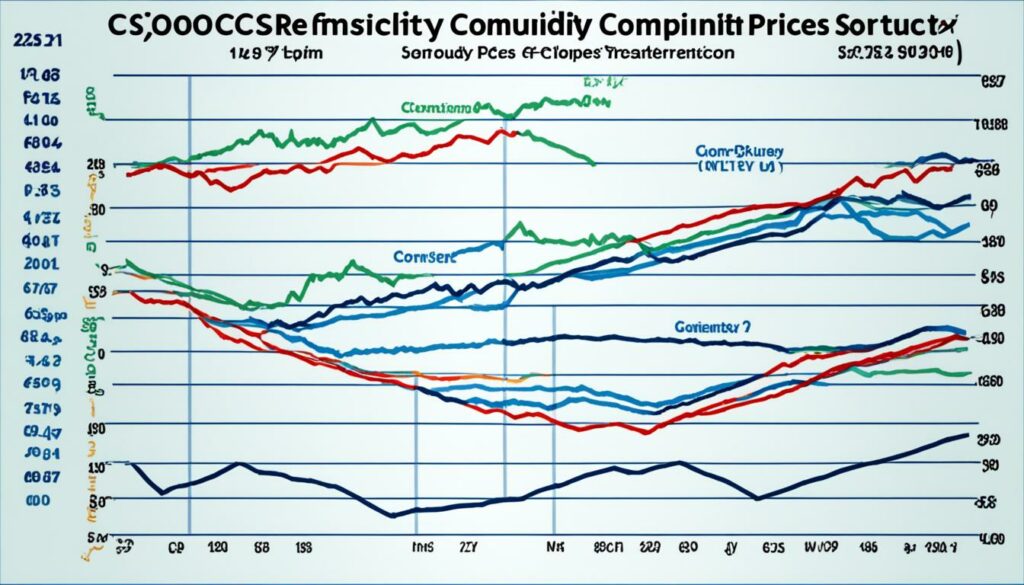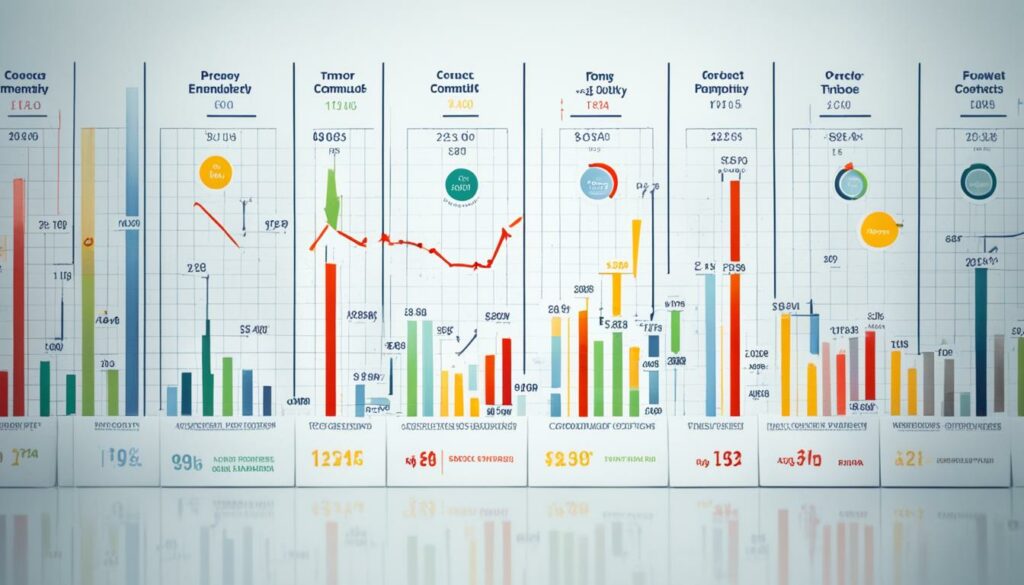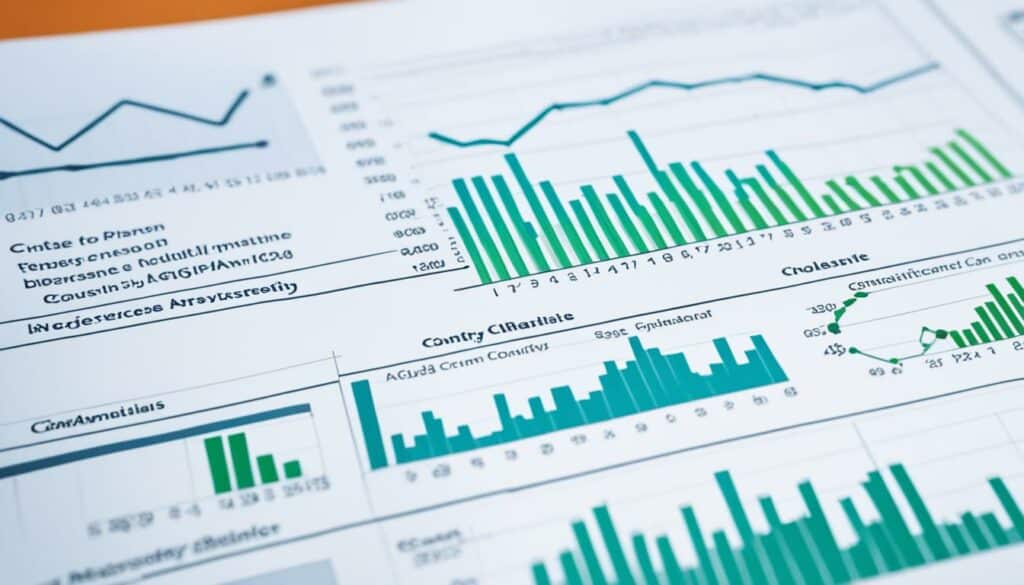Menu

Did you know that Argus publishes more than 40,000 energy and commodity prices globally? This vast number shows how wide and deep their information goes. It sets a very high standard in the field of analysing commodity prices. Argus is known around the world as a reliable source of information. It has over 600 commodity experts. They offer detailed insights for various markets, helpful for anyone in the industry.
Argus doesn’t just provide the latest market news. It also shares insights from conferences and podcasts. For example, the upcoming Argus Clean Ammonia North America Conference in Houston will be very informative. It will cover the newest trends in the industry. Argus’s podcasts, on the other hand, talk about things like crop tours in the Black Sea. This keeps people in the industry up-to-date.
Argus recently looked at the European aluminium scrap shortage. They also focused on sturdy methanol markets and low-carbon methanol as a bunker fuel. The info they share is timely and very useful. Argus also has Argus Direct®, Data Science Studio, and Open Markets®. These tools give easy access to data and insights. They help market players make informed decisions quickly.
For anyone looking at commodity markets, grasping reports is key. They bring fresh market news, deep analysis, and exact prices.
Commodities are split into groups like energy, grains, and precious metals. Knowing this helps make sense of the market.
Some goods can help fight inflation. This is why detailed price reports are so important. They can also make investment mixes stronger because they often move differently from stocks and bonds.
Experts talk a lot to make these reports, making sure they’re clear and right. This work by places like Argus helps us get a clear picture of trends and be smart about risks.
For deeper learning, check out what the CFA Institute has to say. They cover the basics well.
Commodity reports use big indexes to track markets. These include the S&P GSCI and the Bloomberg Commodity Index. They look at how investments are doing over time.
How well these indexes do depends on many things. Things like what they cover, how they’re put together, and who keeps them honest make a big difference. Plus, if prices are higher in the future than now, or the other way around, it changes how people invest and manage risk.
There are interesting ideas behind how we predict commodity prices. These include seeing them as insurance, ways to balance risks, and the costs of storage. By thinking about these ideas and reading what experts say, we can really understand the market.
Accurate price assessments are crucial in today’s global market. They help prevent big financial losses and arguments, mainly in physical supply deals. Making sure everyone knows the cost in these agreements boosts trust and stability.

For physical supply contracts, correct pricing is essential. Extras like tariffs and currency changes can raise the price a lot. This can be more than double the U.S. original. Setting the right initial price helps avoid later disputes and costs.
Financial markets also need accurate pricing. Products like futures and options must rely on solid price reports. Argus and CRU play key roles by providing this vital data. Their accurate reports help manage risks and guess market moves. They guide investors and planners in making smart choices.
| Pricing Considerations | Factors |
|---|---|
| Export Pricing | Market positioning, allowances, demand elasticity, antidumping laws |
| Cost-Plus Pricing | Administration costs, overhead, customs charges, profit margins |
| Marginal Cost Pricing | Product modification, variable costs, production cost coverage |
Accurate price assessments are key in supply chains and financial markets. They maintain economic stability and encourage active market roles. The work by firms like Argus and CRU is vital. They shape the world’s pricing scene with reliable information.
In today’s fast-changing world, knowing global market trends is vital. It helps market players understand the market’s next move. Watching important signs closely gives a deep look into how markets behave.
It’s crucial to keep an eye on key market indicators like supply and demand, trade, and stock levels. These things greatly affect global market trends. For example, general imports in agriculture went up by 18.6% from 2020 to 2021, hitting $193,771 million. The minerals and metals sector also grew by 28.3%, reaching $261,472 million. Such figures are essential for understanding where the market is heading.
| Sector | Increase in General Imports (2021) | Total Imports (in Million USD) |
|---|---|---|
| Agricultural | 18.6% | $193,771 |
| Minerals and Metals | 28.3% | $261,472 |
| Energy-related Products | 74.1% | $219,241 |
| Forest Products | 37.0% | $61,064 |
| Commodity Sectors | 36.8% | $735,547 |
| Non-commodity Sectors | 16.6% | $2,097,326 |
Looking at regional differences adds another layer of analysis. Different places have their own unique economic factors and policies. This influences market trends in various ways. For example, insights from events like the Argus Biofuels & Feedstocks Latin America Conference show how these factors impact markets differently.
It’s key to take a detailed approach in monitoring market indicators and looking at region by region details. This helps in fully grasping global market trends. By carefully focusing on these aspects, decision-makers can adjust their strategies to meet the market’s changes.
Economic analysis is key to forecasting prices in commodities. It uses historical data to understand market movements. This helps to see patterns, guiding future trend predictions. The analysis looks at how changes in a group of 40 key commodity prices match inflation in seven top industrial countries.

Studying old market data is crucial. It shows the connection between commodity prices and key economic measures. For instance, some research linked price changes in commodities with shifts in the U.S. Consumer Price Index (CPI). These findings are gold for traders. They help predict when the market might change.
It also looks into the relationship between the amount of money in the system, goods prices, and commodity prices. This complex equation helps understand market stability better.
Modern tools like Argus Data Science Studio change the game. They use machine learning and complex maths to make better price predictions. They consider many factors, improving how we anticipate market movements even in shaky conditions.
Some recent studies ask if big countries’ monetary policies could be key to keeping commodity prices steady. They suggest a new model. It views commodities either as final products or as the materials to make them. And it shows how important people’s expectations are for price changes.
| Country | Export Earnings from Nonfuel Primary Commodities | Export Earnings from Fuels |
|---|---|---|
| Country A | 60% | 30% |
| Country B | 45% | 55% |
| Country C | 52% | 48% |
Using economic analysis and new predictive tools improves price forecasts. As techniques get better, so does our ability to understand the market. This helps all involved make smarter choices.
In the world of commodities, understanding price volatility is key. Price fluctuations are influenced by many factors. This makes the market unpredictable.
Many elements can lead to big shifts in commodity prices. Geopolitical events, like conflicts, can quickly change the market. Natural disasters, such as hurricanes, can interrupt supply chains.
This leads to sudden price changes. Economic policy changes, like tariffs, also greatly affect prices. It’s vital for market players to stay informed about these factors.
To deal with market risks, effective strategies are a must. Diversifying investments across various commodities can help avoid large losses. Futures and options are useful for hedging against bad price movements.
Regular market updates and analyses from sources like CRU and Argus are essential. They give insights into price influencers, helping with risk management.
| Commodity Sector | Growth in Imports (2020-2021) | Growth in Exports (2020-2021) |
|---|---|---|
| Agricultural Products | 18.6% | 17.9% |
| Minerals and Metals | 28.3% | 32.3% |
| Energy-Related Products | 74.1% | 58.1% |
| Forest Products | 37% | 18.6% |
| All Commodities | 36.8% | 35.1% |
Forecasting commodity prices has changed a lot. We now use both old and new ways. This part looks at how we mix traditional models with the latest technology.
Time series and econometric methods are classic ways to predict prices. They look at past data to find trends. The way we look at commodities changed a lot in 2002. The market became much bigger. Since then, new methods have made our predictions better and more accurate.
Some indicators, like Bloomberg’s charts for metals and livestock, are really helpful. They help investors and others make smart choices. So, the old methods are still very important today.
Machine learning is changing how we predict commodity prices. Deep Learning models, like LSTM, do especially well. During hard times, such as the recent pandemic, they shine in forecasting prices accurately.
This new tech lets us understand huge sets of data. It finds patterns that old methods might not see. The Long Short-Term Memory tool in the Argus Studio is a great example of this.
At the University of Nebraska – Lincoln, a course teaches students about these new methods. Professor Fabio L. Mattos shows them how to use machine learning. This mix of old and new helps students become experts in predicting commodity prices.

Studying case studies on price fluctuations helps us uncover what affects commodity markets. The Covid-19 pandemic brought about a unique situation. This time saw West Texas Intermediate (WTI) crude oil prices fall below zero for the first time. It happened on the 20th of April, 2020. This shows how important it is to do detailed historical commodity price analysis.
Looking at the energy sector, things changed a lot from 2020 to 2021. General energy imports went up by $93,330 million. This was a massive 74.1% increase. At the same time, energy exports increased by $90,957 million. This change was a significant 58.1%.
The agricultural sector also saw big changes. Agricultural product imports went up by 18.6%. This really changed market expectations. For example, the price of shrimp imports went up by 4.5%. This shows how quickly the agricultural market can change.
In minerals and metals, imports increased by 28.3%. Exports also rose by 32.3%. Metals stand out with a 47% price increase. This indicates the need for a sharp focus on market dynamics case studies.
Let’s now look at a comprehensive table. It shows the changes in imports and exports across various commodity sectors from 2020 to 2021.
| Commodity Sector | Change in Imports | Change in Exports |
|---|---|---|
| Agricultural Products | $30,428 million (+18.6%) | $28,167 million (+17.9%) |
| Minerals and Metals | $57,639 million (+28.3%) | $41,379 million (+32.3%) |
| Energy-Related Products | $93,330 million (+74.1%) | $90,957 million (+58.1%) |
| Forest Products | $16,485 million (+37.0%) | $6,213 million (+18.6%) |
| All Other Commodity Sectors | $299,001 million (+16.6%) | $162,290 million (+17.1%) |
| All Commodities Sectors | $197,881 million (+36.8%) | $166,716 million (+35.1%) |
It’s key to keep exploring case studies on price fluctuations. This helps us predict market trends. In short, learning from detailed historical commodity price analysis is crucial. It’s essential for anyone looking to manage risks and take advantage of opportunities in the commodities market.
Recent market reports show big changes in different areas, giving us key insights from commodity market reports. By closely looking at these reports, we understand the latest trends in commodities. We also see how the global market is changing.

The US recently decided to protect its largest coal area from new mining. This shows a big change in energy policy. Meanwhile, experts think the rule against Venezuelan oil sales won’t change, even with a new candidate. Understanding these points is key to a full market review.
US steel companies are putting a lot of money into becoming cleaner, with the government’s support. But, customers don’t want to pay more for this eco-friendly steel. This shows a big challenge. Thai rice prices have gone up because Brazil and Mexico need more. This connection shows how global commodity markets work together.
| Key Development | Implications |
|---|---|
| US coal region closure | Shift towards greener energy sources |
| Stability of oil sanctions | Maintained geopolitical tensions |
| Steel decarbonisation | Growing investment vs. consumer reluctance |
| Surge in Thai rice prices | Increased exports to Brazil and Mexico |
| Bulgarian LNG tender | Strengthening of Turkey’s energy sector |
| Chevron’s UK asset sale | Realignment of corporate strategies |
| CRU market reviews | Market sentiment and price balance |
| Atlantic Basin market trends | Influence on crude prices |
Bulgaria gave the June LNG tender to Turkey’s Botas, changing energy trade alliances. At the same time, Chevron left its UK North Sea assets, including the Clair field. This change shows a shift in focus for Chevron. These events highlight the latest trends in the commodities market.
Moly oxide prices have now stabilised after supply issues led to price swings. The Atlantic Basin’s ongoing effect on crude oil prices is also notable. This information, closely watched by commodity experts, helps us predict future market conditions better.
Market reports are key for understanding market sentiment and trends. They show us the constantly changing world of global commodities. This information is crucial for anyone involved in the market wanting to be ahead of the game.
Using Argus data gives you a head start in market analysis. It publishes over 40,000 energy and commodity prices. With a team of over 600 experts, they offer vital insights for getting ahead in the market.
Argus Direct® and Argus Open Markets® stand out for access to Argus data. These platforms let you see real-time market data. They also provide in-depth reports and insights for smart decision-making.
Argus data isn’t just for energy. It also covers many commodities, like methanol and crop values. This data helps understand changes in supply and demand, essential for strategic insights.
Argus tracks overall economic effects too, like cuts to green hydrogen funds and barge collisions. These updates show the market’s fast pace. Argus data helps in staying ahead with quick, smart strategies.
Argus plays a big role in providing pricing data to the IEA for petrochemicals and more. This highlights how much the industry trusts Argus. Their analytics are key for traders looking to spot future market trends.
In conclusion, Argus data with expert analysis tools is a powerful mix. It helps traders and businesses understand global commodity markets. This knowledge keeps them competitive and up-to-date.
The global events industry market was valued at $1.1 trillion in 2019. It is expected to grow to $2.1 trillion by 2032. Conferences and events are key for networking, keeping up with news, and following market changes. Technology has made these gatherings easier to attend and more enjoyable.
Events like the Argus Biofuels & Feedstocks Latin America Conference are vital for making and strengthening business relationships. They offer a top platform for meeting others in the market. Here, people get to talk face to face, learn about new trends, and create important business ties. Sponsoring these events also lets companies show off their goods and services widely.
For those in the commodity business, staying current is a must. Conferences have many sessions and workshops on market trends and strategies. Take the Argus Europe Carbon Conference, for example. It’s great for learning about new regulations and eco strategies. Knowing these market shifts is very important. They help businesses keep up and thrive.
| Event Type | Key Benefits |
|---|---|
| Corporate Events & Seminars | Learning opportunities, client relationship building |
| Sponsorship | Effective marketing, enhanced brand awareness |
| Entertainment Events | Draws international professionals, music conferences |
The 21-40 year age group is very active in these events. They help keep things fresh and forward-thinking. Technology has made these events more affordable and far-reaching. This is vital for staying competitive in the fast-changing market.
The impact of commodity prices globally is huge. They affect national economies, policies, and people’s lives. In 2021, commodities were key in the U.S.’s trade, with imports increasing by 36.8%. This overshadowed non-commodity imports, which only grew by 16.6%. U.S. exports with commodities also rose significantly, by 35.1% compared to 17.1% for non-commodity exports.
The value of many products increased from 2020 to 2021. For example, shrimp and palm oil prices rose by 4.5% to 64.7%. These changes show how the market for these goods is strong, due to the recovery from the pandemic and other factors like supply chain problems.
In 2021, global commodity prices hit highs not seen for many years. Energy prices went up by 82%, and agriculture and metal prices also rose. These hikes were due to a few things. More people were buying, there were issues with supplying the goods, and the weather was not good for producing them. This mix of reasons shows how complex setting prices for commodities can be.
What does the future hold for commodity prices? Energy prices may fall slightly by 2025, and agriculture prices should go down too. Metal prices might not change much next year but could go up slightly in 2025. These expectations highlight the continuing impact of commodity prices on the world market.
Metals and energy markets are showing some big changes. In April, copper prices hit a two-year high, and gold reached new records because of world tensions. These changes have big effects on economies worldwide. They show why it’s important to closely watch the market for these goods.
Providing special consulting helps businesses understand the complex world of commodity markets. At StoneX, we offer custom consulting services to meet our clients’ specific requirements. We have a rich history and a vast network of over 300 consultants, making us top leaders in our field. We provide unique insights and strategies that really stand out.

At StoneX, we know every client is different, so we tailor our services to them. We cover various sectors like energy, metals, and agriculture. Our Integrated Risk Management Program (IRMP) ensures we personalize everything. It’s designed to help companies make unique hedging strategies. We also offer regular reports and forecast tools. This lets our clients stay ahead with our detailed market analysis.
Our consulting work has made a big difference for real companies. For instance, a major utility saw huge benefits by working with us. They managed to lower their financial risks by over €5 billion. This was all thanks to our expert advice. For an oil and gas company, we crafted a tool that boosted their top line by $200 million. These success stories show how our services truly improve business performance and offer key advantages in the market.
Market news hugely impacts how commodity prices change. Recent events show us just how much these markets react to news. In 2023, commodity prices only went up by 0.8%, much less than the increases seen in 2021 and 2022. Yet, they’re still up by 0.3% in 2024. This tells us that the economy is cooling down.
By the end of 2023, we saw that market news affected prices a lot. Energy costs are set to fall by 5% in 2024. The World Bank index, which measures overall commodity prices, could also drop by 4%. These drops show how geopolitical events and policy changes can affect the market.
Market changes in the long run are also very significant. Food prices were 2.2% higher than last year by February 2024. But, they’re growing less than the overall inflation. Metal prices might fall more in 2024 but are likely to climb by 6% in 2025.
This includes more demand for metals like cobalt and lithium because of electric cars. It’s important to keep track of these trends to understand where commodity prices might go.
A specialist looks at a lot of market data and trends to give insights. They check how prices move globally. This makes it easier to understand the market and make smart choices.
The reports start with market basics and then go into price details. They also look at past prices and future forecasts. This structure helps readers truly understand the market.
Making sure prices are correct in contracts avoids arguments and money loss. It keeps the commodity market fair and stable. Trust is built on this precision.
In finance, the right prices for futures and options are essential. Accurate prices reduce risks and can lead to better trades. They’re key for financial success.
Keep an eye on supply, demand, trading, and how much stock is available. Watching these factors helps spot trends and shape your strategies.
Local economic health, rules, and global events make studying markets worldwide complex. It’s important to understand all these to make correct analyses.
Economic reviews and past data are the basis of predicting future prices. They consider many factors to guess where prices will go.
Tools like those from Argus Data Science Studio use big data to make more accurate predictions. They find patterns in lots of data for better forecasting models.
Geopolitics, natural events, and policy changes make prices unpredictable. Knowing these factors is key for managing market risks.
Diversifying, using financial tools, and staying updated with market reports can lessen losses. These strategies are essential in unpredictable markets.
Forecasting can use old, econometric models or new AI. The chosen method depends on the market and its nuances.
Yes, for instance, the price changes in fuel oil from Nigeria to Europe show how complex the market is. Such cases are great for learning.
Recent reports show the current market status, trends, and how it reacts to big events. They guide market-goers in understanding the trends and sentiment.
Accessing Argus data through Argus Direct® and Argus Open Markets® gives a broad view of the market. It helps in making smart, strategic decisions.
Events like the Argus Europe Carbon Conference are key for networking and staying updated. They offer face-to-face time with market leaders, deepening insights.
Price changes affect economies, jobs, and industries worldwide. They influence politics and development plans. Understanding these effects is crucial.
Specialized consulting services provide unique solutions for trading challenges. They use expert advice and examples to improve your strategies.
News about policies and innovations shapes market attitudes and prices. Staying updated is crucial for making forward-thinking decisions.